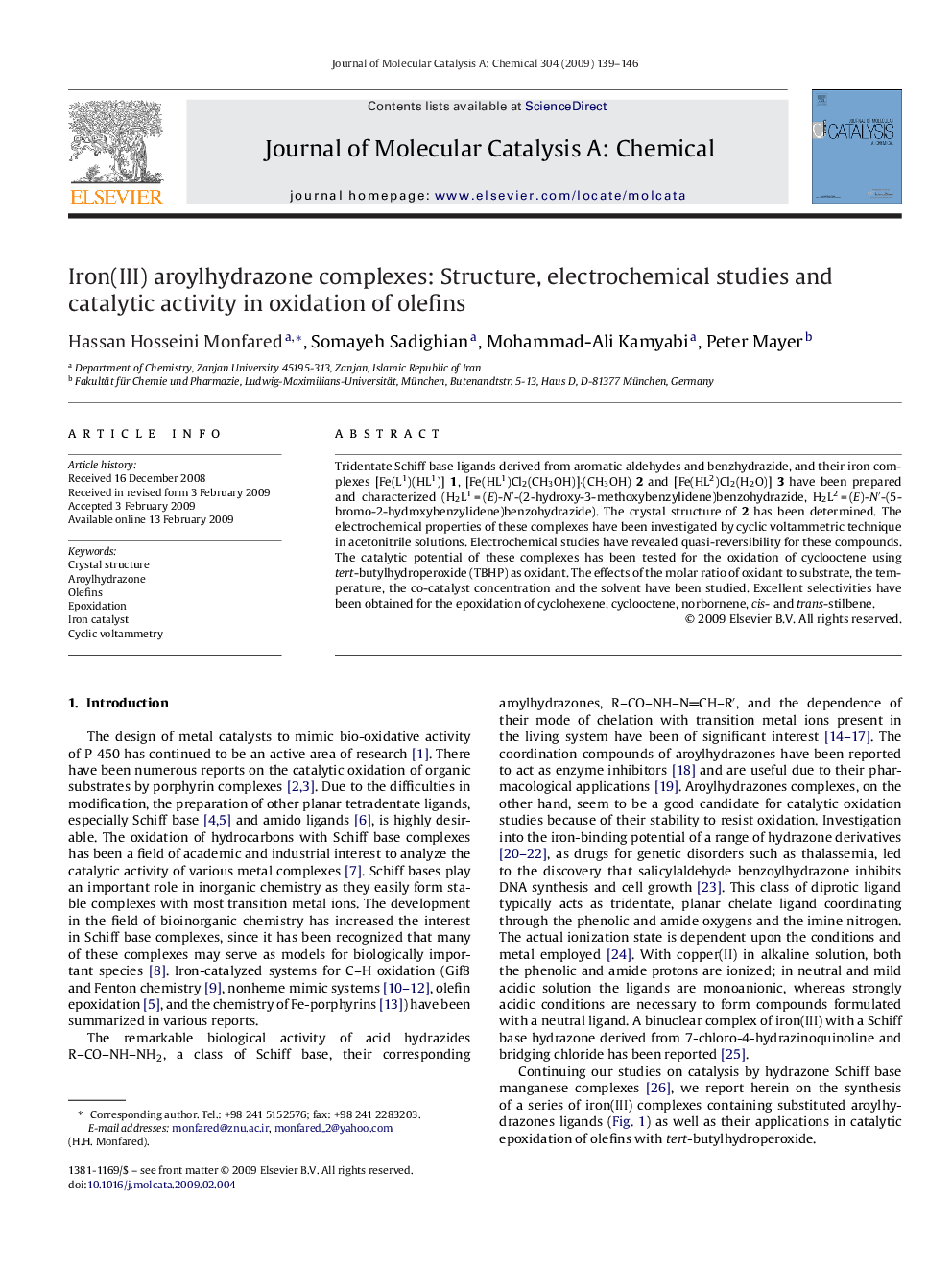| Article ID | Journal | Published Year | Pages | File Type |
|---|---|---|---|---|
| 67061 | Journal of Molecular Catalysis A: Chemical | 2009 | 8 Pages |
Tridentate Schiff base ligands derived from aromatic aldehydes and benzhydrazide, and their iron complexes [Fe(L1)(HL1)] 1, [Fe(HL1)Cl2(CH3OH)]·(CH3OH) 2 and [Fe(HL2)Cl2(H2O)] 3 have been prepared and characterized (H2L1 = (E)-N′-(2-hydroxy-3-methoxybenzylidene)benzohydrazide, H2L2 = (E)-N′-(5-bromo-2-hydroxybenzylidene)benzohydrazide). The crystal structure of 2 has been determined. The electrochemical properties of these complexes have been investigated by cyclic voltammetric technique in acetonitrile solutions. Electrochemical studies have revealed quasi-reversibility for these compounds. The catalytic potential of these complexes has been tested for the oxidation of cyclooctene using tert-butylhydroperoxide (TBHP) as oxidant. The effects of the molar ratio of oxidant to substrate, the temperature, the co-catalyst concentration and the solvent have been studied. Excellent selectivities have been obtained for the epoxidation of cyclohexene, cyclooctene, norbornene, cis- and trans-stilbene.
Graphical abstractTridentate Schiff base ligands derived from aromatic aldehydes and benzhydrazide, and their iron complexes [Fe(L1)(HL1)] 1, [Fe(HL1)Cl2(CH3OH)]·(CH3OH) 2 and [Fe(HL2)Cl2(H2O)] 3 have been prepared and characterized. The crystal structure of 2 has been determined. Electrochemical studies have revealed quasi-reversibility for these compounds. The catalytic potential of these complexes has been tested for the oxidation of olefins using tert-butylhydroperoxide (TBHP) as oxidant.Figure optionsDownload full-size imageDownload as PowerPoint slide
